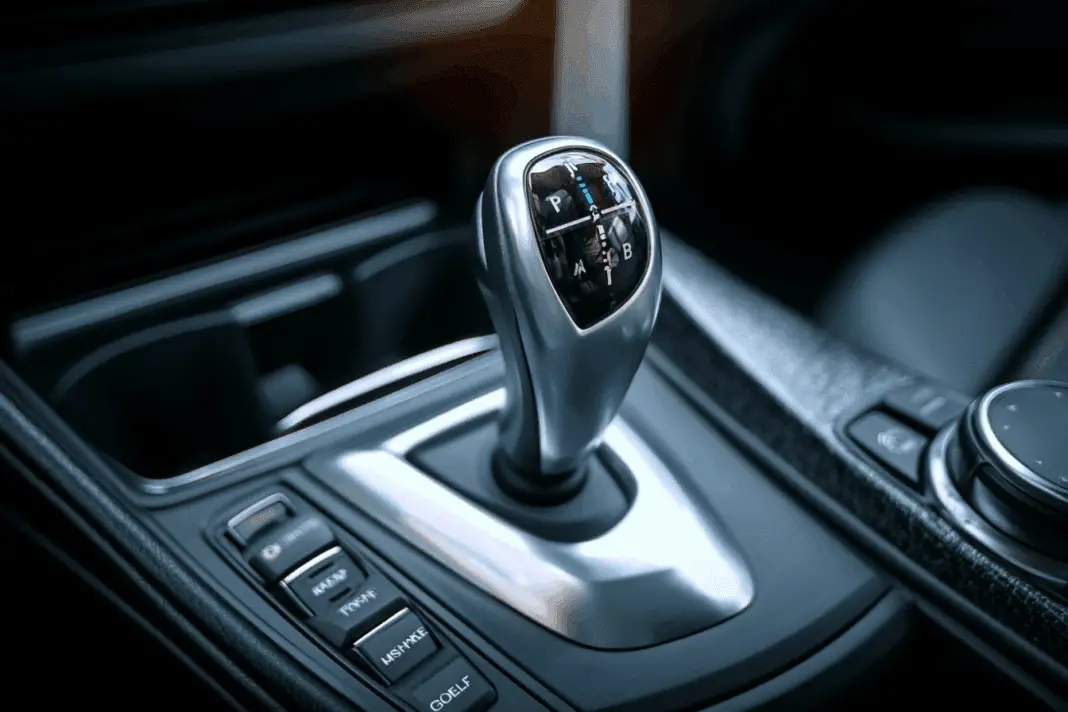Most drivers think automatic cars are foolproof, but that assumption leads to expensive transmission repairs and premature wear. Everyday habits that seem harmless are actually shortening your car’s lifespan and draining your wallet. These common mistakes happen so frequently that mechanics see the same preventable damage patterns repeatedly. Understanding these errors can save thousands in repair bills and keep your automatic transmission running smoothly for years. The worst part? Most people have no idea they’re doing anything wrong until it’s too late and the damage is already done.
Holding the car on hills with the gas pedal
Sitting at a red light on an incline and using the accelerator to prevent rolling backward puts unnecessary strain on your transmission. This technique, called “riding the throttle,” forces the transmission to work against gravity while generating excessive heat. Heat is the enemy of automatic transmissions, breaking down the fluid and causing internal components to expand and contract inappropriately. Many drivers develop this habit thinking they’re being helpful, but they’re actually creating the perfect conditions for transmission failure.
The transmission fluid reaches dangerously high temperatures during this practice, losing its lubricating properties and becoming thick and burnt. Automotive professionals recommend using the parking brake or simply allowing the car to roll back slightly against the brake pedal instead. Modern automatic transmissions have built-in hill-start assist features that make this old-school technique completely unnecessary. Breaking this habit immediately can prevent thousands in transmission rebuilding costs.
Driving with a cold transmission
Jumping in your car on a cold morning and immediately driving aggressively puts your transmission at serious risk of damage. Cold transmission fluid is thick and doesn’t flow properly through the intricate passages and valves inside your transmission. This poor circulation means some components don’t receive adequate lubrication during the critical first few minutes of driving. The transmission’s computer systems also can’t operate properly when fluid temperatures are below optimal ranges, leading to harsh shifts and delayed engagements.
Most automatic transmissions need 5-10 minutes of gentle driving to reach proper operating temperature and fluid viscosity. During cold weather, this warm-up period becomes even more critical as transmission fluid can become almost gel-like at extremely low temperatures. Allowing your transmission to warm up gradually by avoiding hard acceleration and high RPMs during the first few miles can prevent premature wear and expensive repairs. Car owners who follow this practice report significantly longer transmission life and smoother operation throughout their vehicle’s lifespan.
Shifting to park while still moving
Rolling into a parking spot and immediately throwing the car into park might save a few seconds, but it’s wreaking havoc on your transmission. The parking pawl, a small metal piece that locks your transmission, takes all the stress when you shift to park while moving. This component isn’t designed to stop a moving vehicle, and forcing it to do so creates metal shavings and eventual failure. The grinding sound you might hear is your transmission literally eating itself from the inside out.
Even at slow speeds, this practice causes microscopic damage that adds up over time. Transmission experts consistently rank this as one of the top causes of premature automatic transmission failure. The proper technique involves coming to a complete stop, applying the parking brake, then shifting to park. This simple change in habit can extend your transmission’s life by tens of thousands of miles and prevent costly repairs that often exceed the car’s value.
Ignoring transmission fluid changes
Unlike engine oil, transmission fluid doesn’t get the attention it deserves, leading many drivers to skip this critical maintenance entirely. Old transmission fluid loses its ability to lubricate, cool, and hydraulically operate your transmission’s complex internal mechanisms. The fluid gradually becomes contaminated with metal particles, dirt, and burnt residue that acts like sandpaper on delicate transmission components. Most manufacturers recommend fluid changes every 30,000 to 60,000 miles, but many drivers go twice that distance without servicing.
Dirty transmission fluid turns dark brown or black and develops a burnt smell that indicates serious internal damage is already occurring. Mechanics report that regular fluid changes can prevent up to 90% of automatic transmission failures. The cost difference between a fluid change ($150-300) and a transmission rebuild ($3,000-5,000) makes this maintenance item one of the best investments you can make. Fresh fluid keeps temperatures down, parts lubricated, and your transmission shifting smoothly for its entire designed lifespan.
Shifting into reverse without stopping
The rush to get out of a parking space or change directions often leads drivers to shift into reverse while still moving forward. This practice creates tremendous stress on the transmission’s internal clutches and bands, forcing them to absorb all the energy from your moving vehicle. The transmission has to completely reverse the direction of power flow instantly, causing components to slip, overheat, and wear prematurely. Even at parking lot speeds, this habit causes cumulative damage that eventually leads to slipping gears and complete transmission failure.
Modern automatic transmissions have some protection against this abuse, but they can’t completely prevent the damage from repeated occurrences. The proper technique requires coming to a complete stop, pausing for a moment, then shifting into reverse. Transmission specialists estimate that this single habit can reduce transmission life by 40% or more. The brief pause allows internal pressures to equalize and prevents the violent engagement that destroys expensive internal components.
Using the wrong transmission fluid
Not all automatic transmission fluids are created equal, and using the wrong type can cause immediate and catastrophic damage to your transmission. Each manufacturer specifies exact fluid requirements based on their transmission’s design, materials, and tolerances. Using generic or incorrect fluid can cause seals to swell or shrink, clutches to slip, and hydraulic systems to malfunction. Some modern transmissions require very specific synthetic fluids that cost more but provide superior protection and performance characteristics that generic alternatives simply cannot match.
The difference between compatible and incompatible fluids isn’t always obvious until damage occurs, making this mistake particularly expensive. Honda, Toyota, and European manufacturers often require unique fluid formulations that aren’t interchangeable with standard Dexron or Mercon fluids. Using the owner’s manual or consulting with a qualified technician ensures you’re using the correct fluid specification for your specific transmission. Experienced mechanics have seen transmissions fail within weeks of receiving incorrect fluid, turning a routine maintenance procedure into a major financial disaster.
Overloading your vehicle regularly
Consistently carrying heavy loads or towing without considering your transmission’s limitations puts enormous stress on internal components designed for normal driving conditions. The transmission has to work harder to move the additional weight, generating more heat and causing increased wear on clutches, bands, and pumps. Many drivers don’t realize that their transmission has weight limits just like their vehicle’s gross vehicle weight rating. Exceeding these limits regularly can cut transmission life in half while voiding manufacturer warranties in some cases.
Towing boats, trailers, or carrying maximum cargo loads requires additional cooling and sometimes different driving techniques to prevent transmission damage. The transmission fluid temperature can spike dramatically under load, especially during summer months or when climbing hills. Installing an auxiliary transmission cooler and monitoring fluid temperatures can help protect your investment when heavy-duty use is necessary. Understanding your vehicle’s towing capacity and staying within those limits ensures your automatic transmission remains reliable and efficient throughout its intended service life.
Neglecting the transmission filter
Hidden inside your transmission pan, the transmission filter quietly removes contaminants from fluid circulation, but most drivers forget it exists until problems develop. A clogged filter restricts fluid flow, causing the transmission pump to work harder and creating pressure problems throughout the system. Reduced fluid flow means inadequate lubrication and cooling for critical components, leading to overheating and premature failure. The filter captures metal particles, dirt, and debris that would otherwise circulate through your transmission causing abrasive wear.
Unlike spin-on oil filters that are easily accessible, transmission filters require removing the transmission pan and can’t be inspected without disassembly. Most transmission service intervals include filter replacement along with fluid changes, but some quick-lube shops skip this step to save time and money. A dirty filter can cause shifting problems, slipping, and eventually complete transmission failure as internal components become starved of clean fluid. Ensuring your transmission service includes filter replacement protects your investment and maintains proper hydraulic pressure throughout the transmission’s complex internal systems.
Running low on transmission fluid
Low transmission fluid levels create a cascade of problems that can destroy your transmission in a matter of miles rather than years. Insufficient fluid means the transmission pump can’t maintain proper pressure, causing clutches to slip and overheat rapidly. Air bubbles enter the hydraulic system when fluid levels drop, creating erratic shifting patterns and harsh engagements that shock internal components. Unlike engine oil, transmission fluid doesn’t typically burn off during normal operation, so low levels usually indicate a leak that needs immediate attention.
Many modern vehicles don’t have transmission dipsticks, making fluid level monitoring more difficult for average drivers. Warning signs include delayed shifting, slipping gears, unusual noises, or burnt fluid smells that indicate serious internal damage is already occurring. Checking fluid levels regularly and addressing leaks promptly can prevent catastrophic transmission failure and the associated repair costs. Even small leaks should be repaired immediately since transmission fluid is essential for lubrication, cooling, and hydraulic operation of every moving part inside the transmission assembly.
These automatic transmission mistakes cost American drivers billions in unnecessary repairs every year, yet they’re completely preventable with basic knowledge and proper habits. Taking care of your automatic transmission isn’t complicated, but ignoring these common errors can turn a reliable vehicle into an expensive headache. Your transmission will reward proper treatment with smooth operation and years of trouble-free service.

